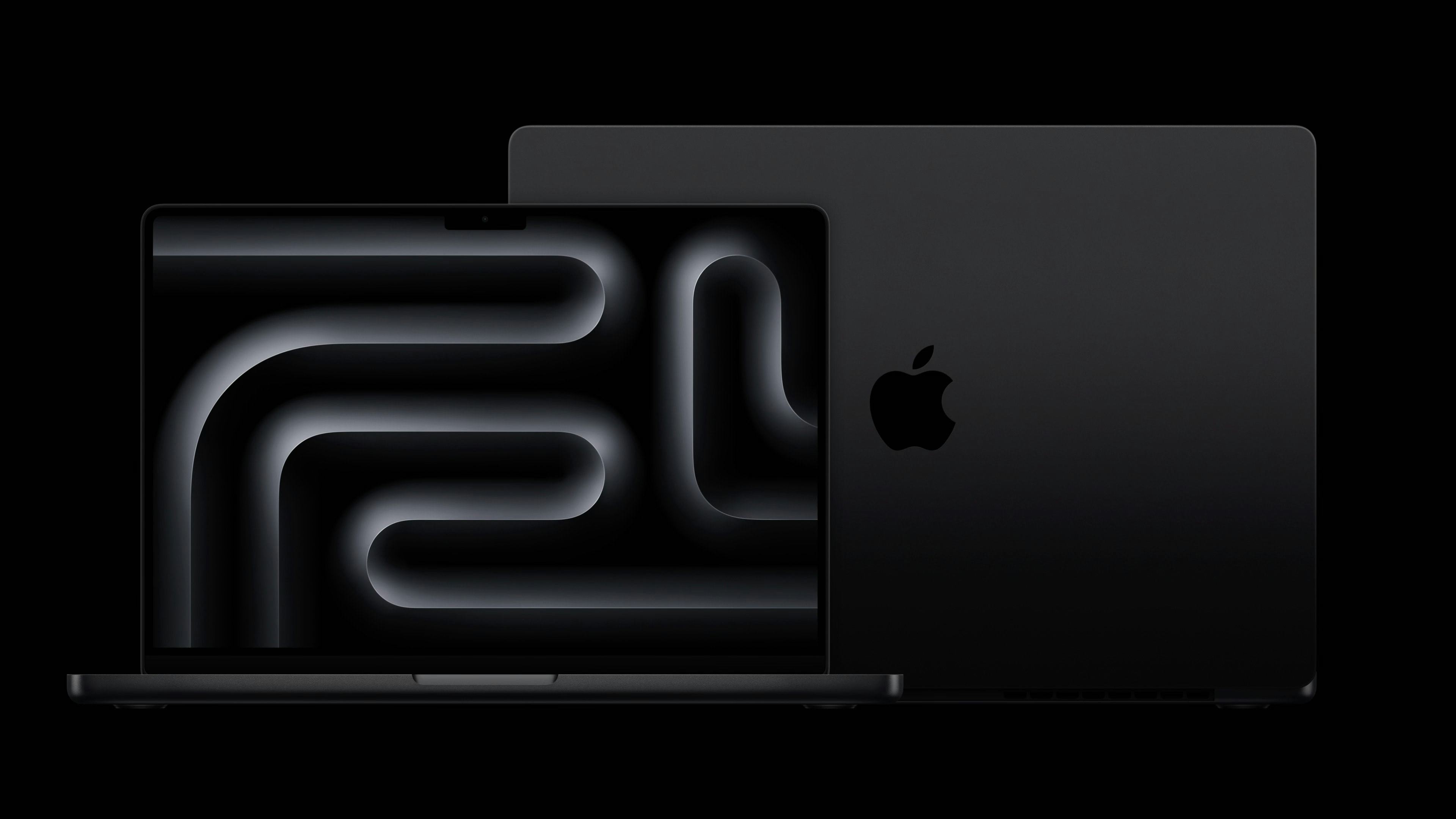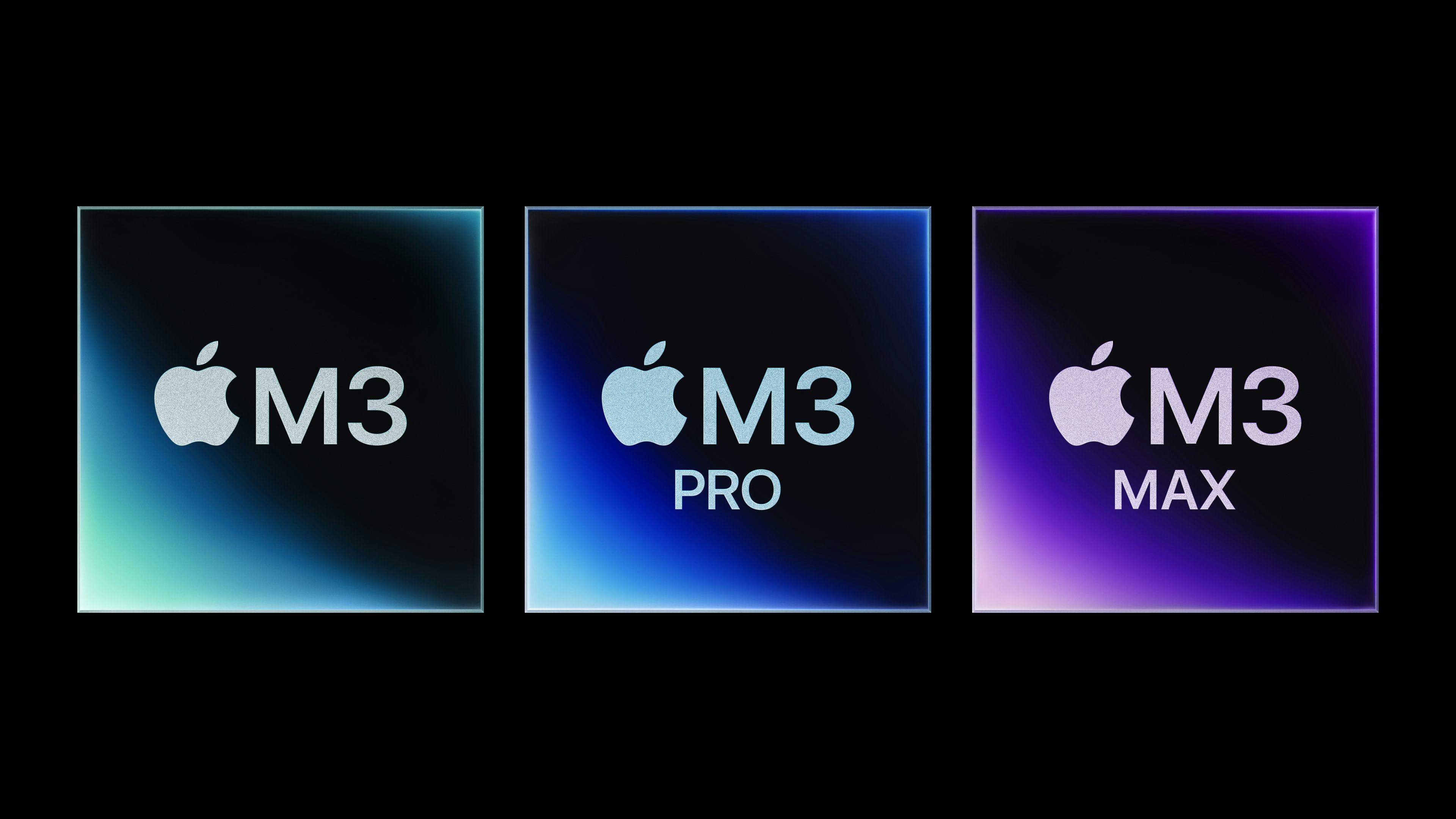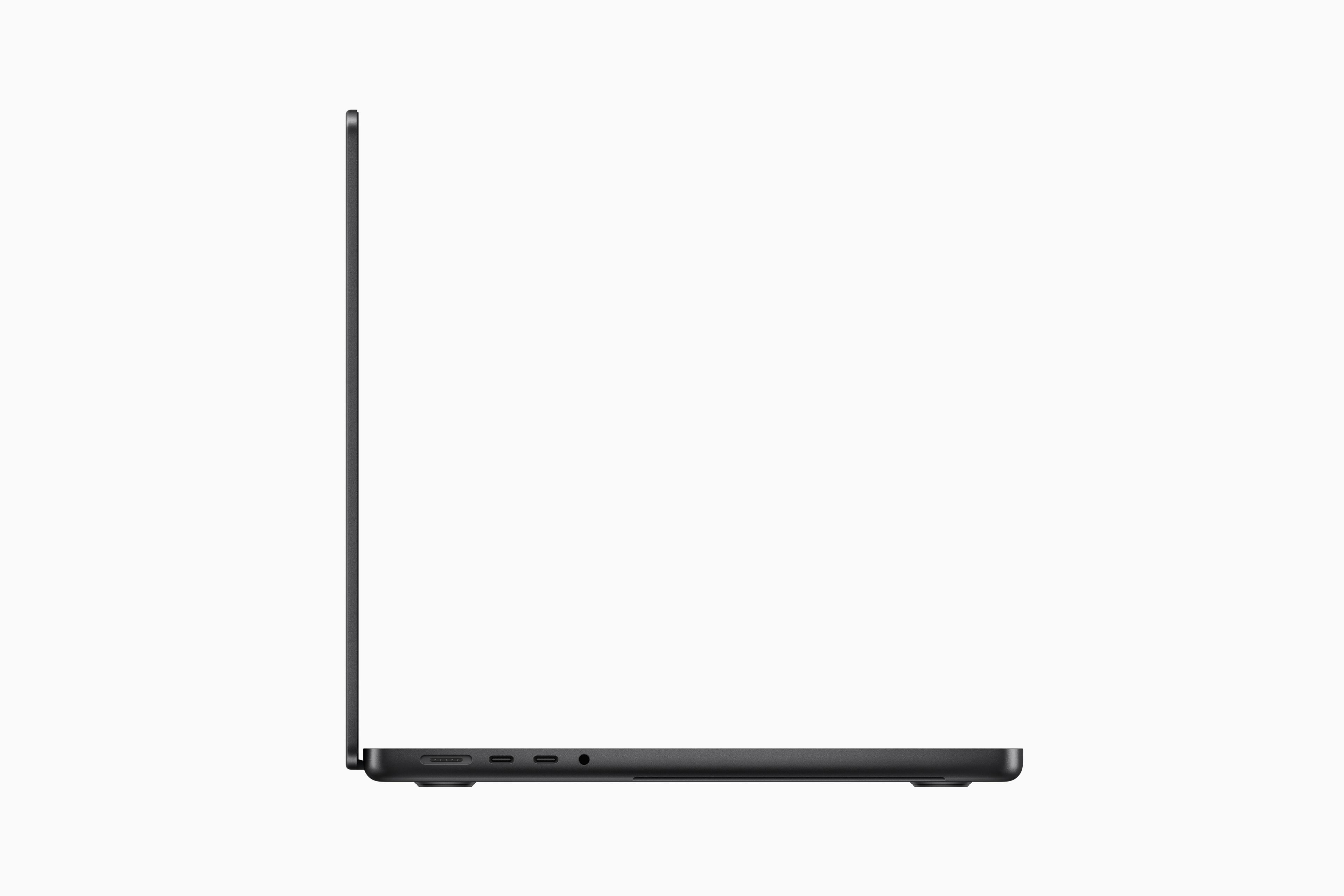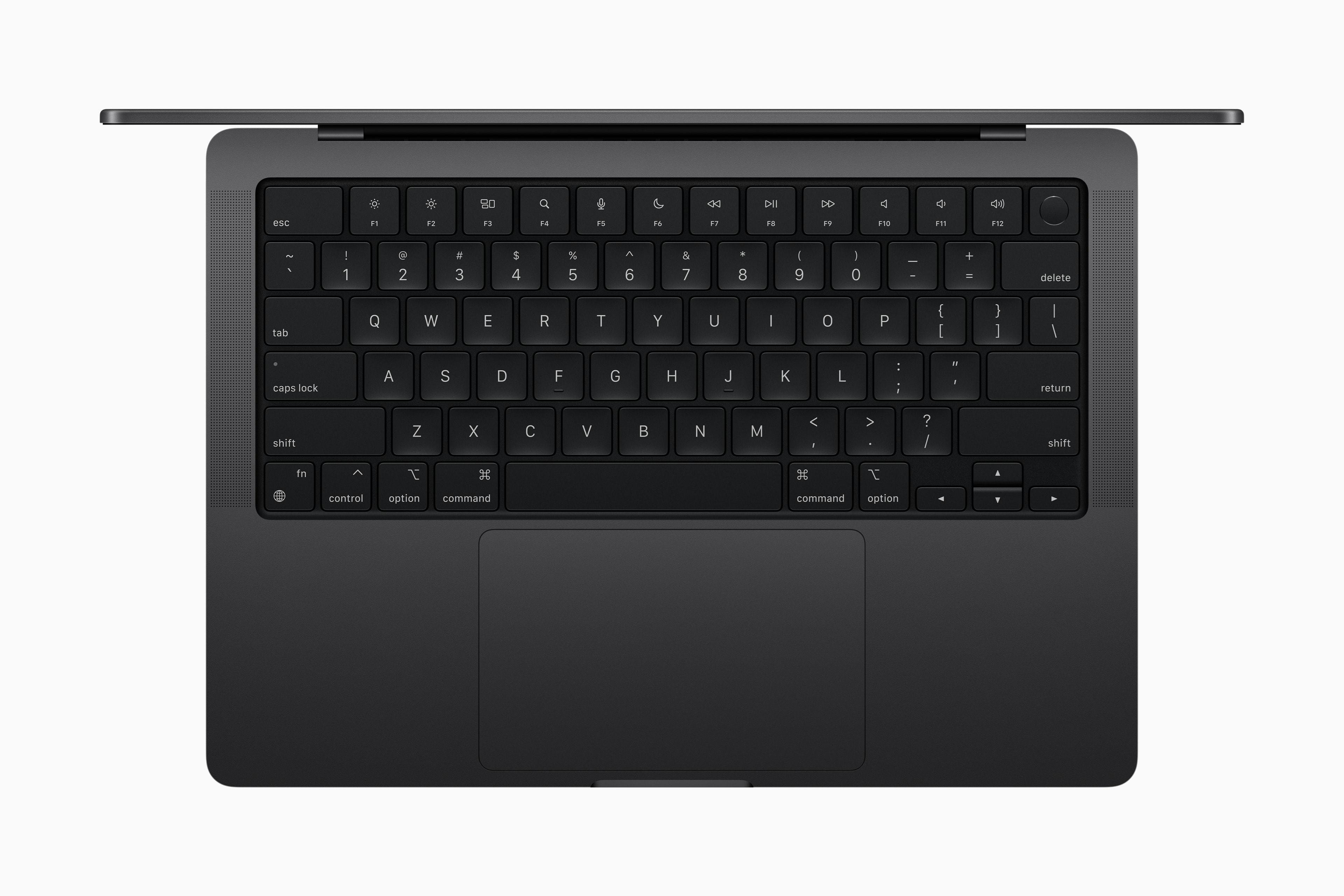
Just in time for the holiday shopping season, Apple has announced new 14- and 16-inch MacBook Pros with more powerful M3 Pro and M3 Max chips at its “Scary fast” event today, starting at the same $1,999 and $2,499, respectively. And as predicted, there’s a new black colorway called “space black” that replaces “space gray” for these models. (New M3-powered iMacs were also announced, in case desktops are more of your thing.)
Apple also added an entry-level 14-inch MacBook Pro with a less powerful M3 chip, starting at a more affordable $1,599. This model has fewer cores, less unified memory, less storage, and one less Thunderbolt USB-C port (two instead of three).
The new MacBook Pros succeed the M2 Pro and M2 Max models Apple introduced in January. The M3 and M3 Pro laptops are available for order today and will be available starting on November 7; M3 Max models will ship later next month.
Hello, Space Black
From the outside, the new MacBook Pros look identical to M2 Pro/M2 Max and M1 Pro/M1 Max models. Other than the M3 version having one less Thunderbolt port and coming in space gray or silver and the M3 Pro/M3 Max models in space black or silver, the hardware is the same.
Same ports (HDMI, SDXC card slot, headphone jack, and MagSafe 3), same Liquid Retina XDR display with 120Hz ProMotion, same six-speaker sound system with Spatial Audio support, and same class-leading keyboard and trackpad.
I have not seen the space black in person, but Apple says it’s resistant to fingerprints. And, black!
Three chip configurations: M3, M3 Pro, and M3 Max

The Apple silicon on the inside, however, is the main attraction. In the past, Apple offered its 14- and 16-inch MacBook Pros with “Pro” and “Max” chips. To hit the lower $1,599 price point, Apple has added a regular model.
The 14-inch MacBook Pro is the only laptop (so far) with the M3 chip. The $1,599 base configuration has an 8-core CPU, 10-core GPU, 8GB of unified memory, and 512GB of SSD storage. Eagle-eyed readers will notice those are the same specs as the M2 chip. A $1,799 model is available with 1TB of SSD storage.
A $1,999 base configuration 14-inch MacBook Pro with M3 Pro chip has an 11-core CPU and 14-core GPU (versus the 10-core CPU and 16-core GPU in the M2 Pro), 18GB of unified memory (versus 16GB), and 512GB of SSD storage. Spec up to the $2,399 M3 Pro model and you get a 12-core CPU, 18-core GPU, 18GB of unified memory, and 1TB of SSD storage.
The 16-inch MacBook Pro with M3 Pro starts at $2,499 and comes with a 12-core CPU, 18-core GPU, 18GB of unified memory, and 512GB of SSD storage. A $2,899 model has the same CPU and GPU cores and storage, but bumps up the unified memory to 36GB.

For the most performance, there’s the MacBook Pros with the M3 Max chip. A 14-inch MacBook Pro with the M3 Max chip starts at $3,199 and comes with a 14-core CPU, 30-core GPU, 36GB of unified memory, and 1TB of SSD storage. The 16-inch MacBook Pro has two pre-built configs with the M3 Max chip: a $3,499 model with the same specs as the base 14-inch and a $3,999 model with a 16-core CPU, 40-core GPU, 48GB of unified memory, and 1TB of SSD storage.
Got all that?
There’s more. For those who want it, both models can be configured with up to 128GB of unified memory — a spec previously exclusive to the M2 Ultra Mac Studio and Mac Pro. How’s that for a “pro” laptop?

So how does having more cores for the CPU and GPU, and more unified memory translate to real-world applications?
For the 14-inch MacBook Pro, Apple says the M3 chip is up to 60 percent faster at rendering video in Final Cut Pro than a 13-inch MacBook Pro with an M1 chip.
Moving on over to the 14- and 16-inch MacBook Pros with M3 Pro chip, Apple touts up to 40 percent faster performance compared to a 16-inch MacBook Pro with M1 Pro chip.
And for new MacBook Pros with M3 Max chip, Apple says they’re up to 2.5 faster than a 16-inch MacBook Pro with M1 Max chip.
All M3 “family” MacBook Pros also have a faster 16-core Neural Engine for machine learning applications.
You can find all of Apple’s cherry-picked performance claims over here, but the bottom line looks to be pretty simple to understand: These new MacBook Pros are a big leap in performance compared to MacBook Pros with M1 “family” chips. The power gains will likely be less noticeable side-by-side with MacBook Pros with the M2 “family” chips.







